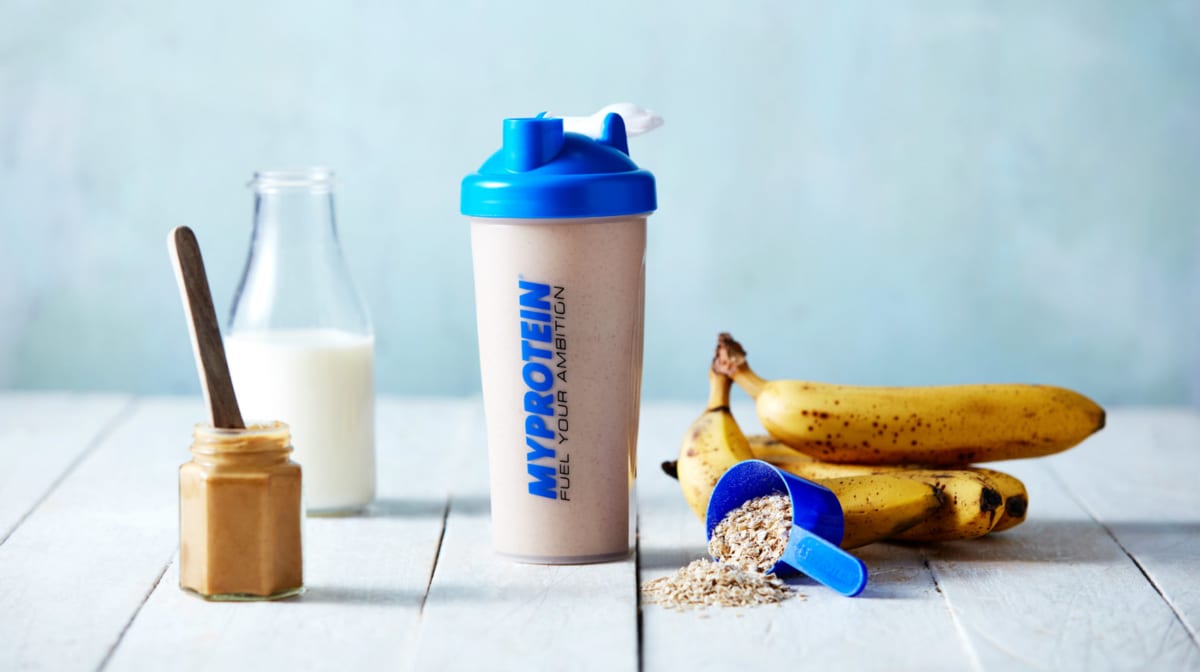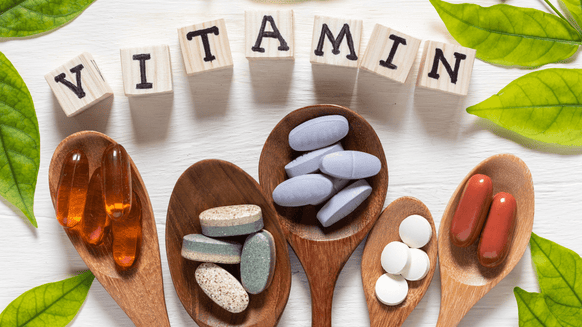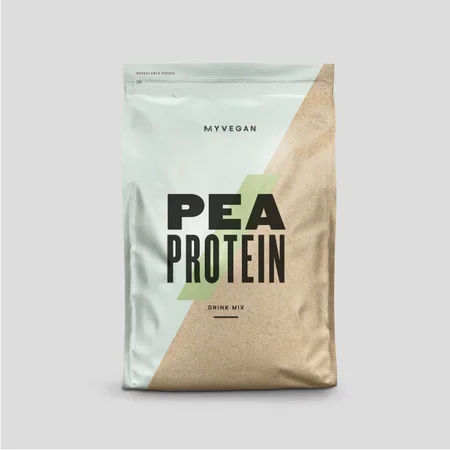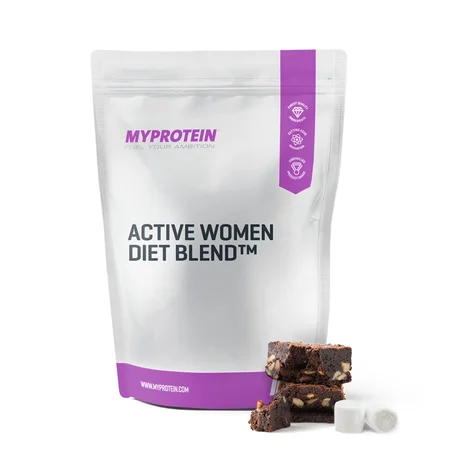
Once only thought of as fuel for die-hard athletes and bodybuilders, protein powder is now a cupboard essential for millions across the country.
In fact, according to new market research by Statista, two in five (46%) Americans said they regularly consume protein drinks and shakes.
So why when we’ve known about protein for more than 300 years, and its effect on the body for over 100, is the population suddenly so fascinated with protein – and just how will increasing the amount in your diet benefit your health and fitness goals?
What Is Protein, Anyway?
Proteins are molecules made up of amino acids. They’re the body’s bricks and mortar for rebuilding muscle, replicating DNA, and catalyzing metabolic reactions. The human body is clever – it can biosynthesize some amino acids, but not all of them, so we need protein in our diets to get the rest.
Those looking to muscle-up need more protein than the average sofa spud
The government recommends that the baseline requirements for adults is 0.8g of dietary protein for every 2 pounds of bodyweight per day. That’s around 56g per day for the average sedentary man and 46g per day for the average sedentary woman (equivalent to a sirloin steak). However, boosted requirements for those looking to muscle-up, sculpt their bodies and improve performance is of course much higher than the needs of your average sofa spud.
To maximize muscle growth, research from the Journal of Sports Sciences recommends consumption of between:
1.3-1.8g per kilogram of bodyweight per day (or 0.6-0.8g per pound) (the amount between these two points depends on training status) and; Up to 1.8-2g per kilogram of bodyweight per day (or 0.8-0.9g per pound) during periods of energy restriction to prevent muscle loss – more than double the government recommendations.
Protein and Muscle Building
Using data from 49 studies spanning over the last 23 years, a recent review in the British Journal of Sports Medicine concluded that dietary protein supplementation optimizes both muscle mass and strength during resistance training.
Here’s how it works:
Resistance training stimulates two actions in the muscles simultaneously – catabolism (tissue breakdown) and anabolism (tissue growth). The factor that affects which one is favored in the body the most is called ‘net protein balance’. A positive net protein balance favors anabolism, and a negative one favors catabolism. Consumption of adequate dietary protein puts the body into positive net protein balance, and so enhances muscle growth while resistance training.
It’s not just muscle mass and strength that protein consumption improves, either. A study in the Journal of the International Society of Sports Nutrition found that protein supplementation reduces muscle fatigue, too, which means you could blast through a week of intense training if you stay topped up throughout the day.
Increasing your muscle mass and strength is key for good health as you grow older
Increasing your muscle mass and strength not only makes you look and feel your best, but it’s also key for good health as you grow older. ‘Sarcopenia’ is the degenerative loss of muscle mass in aging individuals, causing frailty and loss of muscle function. It’s incredibly common – and entirely preventable.
There’s a tendency for older adults to eat and move less over time, when in fact they ought to be doing just the opposite. The two most important strategies to prevent or reverse sarcopenia surround proper nutrition and adequate resistance exercise.
Our muscles require a stimulus (resistance exercise) to stay fully functional, supported by the right nutrition (adequate protein and energy). In fact, a recent review in Sports Medicine, which analyzed the results from 9 randomized controlled trials, concluded that supplementing the diet with protein powder in combination with resistance training is associated with gains in fat-free mass in older adults.
Protein and Weight Management
Higher protein diets have also demonstrated the ability to help with weight management. Of course, a healthy, balanced diet is the key to keeping the extra pounds at bay, but something about this mighty macronutrient seems to be helping people to lose weight, and keep it off.
Thermogenesis
There are a number of ways a higher protein diet could help shift those stubborn love handles. Firstly, protein is known to bring about a higher rate of dietary thermogenesis than other nutrients – that’s the natural increase in the energy your body uses after eating. Research in the Nutrition & Metabolism journal explains that eating protein can actually allow the body to blast through up to 20-30% more calories than carbohydrates or fat.
Satiety
People are fuller after a 60% vs. a 19% protein meal
Plus, protein has been found to increase levels of satiety (fullness). Sustained satiety should be a major component of any weight-loss strategy – the fuller you feel, the less likely you are to overeat. Simple! Based on a visual analogue scale, which measures perceived appetite, people have been found to be significantly fuller after a 60% protein meal vs. a 19% protein meal.
Metabolism
Finally, muscles are metabolically active, which means that they require energy to simply exist. So, the more muscle tissue you have, the more calories your body will burn every day. That could be the boost to your resting metabolic rate your body needs to help shed that muffin top you’ve wanted to lose since your New Year’s resolution circa 1998.
Remember, though, if you’re looking to go down a belt notch or two, eating a higher protein diet doesn’t mean you can eat all the protein you can manage without any consequences. You still have to look after the amount of energy you’re consuming vs. the energy you expend.
Protein and Tone Goals
Lots of people talk about toning up, firming up, and sculpting their shape. What this really means is gaining enough muscle without becoming ‘bulky’, and losing enough body fat to show those muscles off.
In order to get a toned-looking physique, it’s important to engage in resistance exercise and eat sufficient amounts of protein in the same way as people who are looking to add muscle mass to their frame. For women, unless they undergo very heavy training for a sustained period of time supported by the right nutrition, it’s unlikely their muscles will get overly ‘bulky’, as they naturally have fewer testosterone hormones than men.
The key to losing enough fat to make your muscles visible is being in a calorie deficit, which means eating less that your body expends. The problem is that the body will lose muscle mass as well as fat during periods of caloric deficit, which isn’t ideal if you’re trying to get a sculpted physique.
The body will lose muscle mass as well as fat during periods of caloric deficit
In order to build and preserve muscle mass while restricting energy intake, your body requires an adequate intake of protein. Research in TheAmerican Journal of Clinical Nutrition has shown that during a period of marked calorie deficit while resistance training, eating 2.4g protein per kilogram of bodyweight per day (or 1.1g per pound) can be more effective than 1.2g per day in promoting increases in muscle mass. Interestingly, the highest protein group also lost more body fat during the study.
So, in the same way that it supports both muscle growth and weight management, getting enough dietary protein along with the right nutrition and exercise regime can help build the shape you’ve always wanted, without the worry of packing on size.
But Can’t I Just Get All My Protein From Food?
Of course! But people aren’t turning to protein supplements as a substitute for their everyday meals.
Protein powders offer people an easy, convenient way to up their protein intake without consuming extra carbohydrates and fat, at a much lower cost than other protein sources like meat and fish.
The average scoop of Impact Whey Protein costs 42¢
For instance, your average supermarket chicken breast will set you back $1.27 and contains 24g of protein per 100g, while the average scoop of
It’s a no-brainer for individuals looking to boost their diet and achieve their fitness goals.
So, What’s The Right Protein Powder For Me?
When you’re choosing your protein powder, it’s important to pick the right one to support to support the look you’re aiming for, whether that’s building muscle, losing weight, or just looking to tone up and get yourself into a healthy shape. Here’s a rundown of the most commonly used protein powders out there…
Whey Protein
Whey is simply an all-natural by-product of milk during cheese production, while whey protein is made from the proteins that are isolated from whey during filtration. Whey protein is the most commonly used protein supplement due to its excellent digestibility, amino acid profile, and absorption rate.
There are three main types of whey protein: whey protein concentrate, whey protein isolate, and hydrolyzed whey protein.
Whey Protein Concentrate
- Whey protein concentrates contain a little more fat and carbohydrates than the other two forms of whey protein, but these quantities are still relatively low.
Impact Whey Protein is made from whey protein concentrate, contains 82g of protein per 100g, and comes in at the lowest price out of the three types of whey, making it a cost-effective way of getting that all-important protein into your diet.
Whey Protein Isolate
- Whey protein isolate is one of the purest whey proteins available. It’s expertly filtered to remove most of the fat and carbohydrates present in whey concentrates – ideal if you’re watching your calorie intake.
Impact Whey Isolate is processed to ensure maximum protein integrity, and contains the highest amount of protein of all three types, at a generous 90g of protein per 100g.
Hydrolyzed Whey Protein
- Hydrolyzed whey protein is a type of ‘enzymatically pre-digested’ protein, which means it’s had some of its amino acid peptide bonds broken into shorter chains. This pre-digestion means that the protein can be metabolized by the body more easily, and therefore absorbed more rapidly than whey concentrate or isolate.
Hydrolyzed Whey Protein contains 80g of protein per 100g, and its processing is carefully monitored to ensure the protein retains its high quality.
Plant-Based Protein Powders
- An estimated 6% of Americans are now full-time vegans (that’s a staggering 35 million). So, it’s no surprise that plant-based protein powders have shot into the limelight over the past few years.
There are a fair few plant-based protein powders to choose from, but ultimately it’s down to personal choice as to which one you go for. The main types of plant-based protein powders come from peas, soy beans, and brown rice – each with slightly different digestibility rates, amino acid profiles, fiber content, and essential fatty acid content.Soy Protein Isolate boasts a comprehensive amino acid profile to support muscle growth and maintenance and a quick and delicious boost to your diet whenever you need it.
So, whether you’re looking to add some muscle to your frame, look after your weight or set yourself up for a healthy future, it’s clear supplementing your diet with the right protein powder can really help fuel your ambitions, in a way that fits your lifestyle.

Phillips, S. M., & Van Loon, L. J. (2011). Dietary protein for athletes: from requirements to optimum adaptation. Journal of Sports Sciences, 29(sup1), S29-S38.
Morton, R. W., Murphy, K. T., McKellar, S. R., Schoenfeld, B. J., Henselmans, M., Helms, E., … & Phillips, S. M. (2018). A systematic review, meta-analysis and meta-regression of the effect of protein supplementation on resistance training-induced gains in muscle mass and strength in healthy adults. British Journal of Sports Medicine, bjsports-2017.
Babault, N., Deley, G., Le Ruyet, P., Morgan, F., & Allaert, F. A. (2014). Effects of soluble milk protein or casein supplementation on muscle fatigue following resistance training program: a randomized, double-blind, and placebo-controlled study. Journal of the International Society of Sports Nutrition, 11(1), 36.
Finger, D., Goltz, F. R., Umpierre, D., Meyer, E., Rosa, L. H. T., & Schneider, C. D. (2015). Effects of protein supplementation in older adults undergoing resistance training: a systematic review and meta-analysis. Sports medicine, 45(2), 245-255.
Westerterp, K. R. (2004). Diet induced thermogenesis. Nutrition & Metabolism, 1(1), 5.
Stubbs, R. J., Johnstone, A. M., & Harbron, C. G. (1996). Breakfasts high in protein, fat or carbohydrate: effect on within-day appetite and energy balance. European Journal of Clinical Nutrition, 50(7), 409-417.
Longland, T. M., Oikawa, S. Y., Mitchell, C. J., Devries, M. C., & Phillips, S. M. (2016). Higher compared with lower dietary protein during an energy deficit combined with intense exercise promotes greater lean mass gain and fat mass loss: a randomized trial. The American Journal of Clinical Nutrition, 103(3), 738-746.
Related Posts

The Complete Guide To Vitamins, Minerals & Supplements To Boost Your Health









